An article in last week’s Focus supplement outlined that despite concentrate prices increasing significantly in recent months, the economics of supplementing finishing lambs still stacks up.
Two aspects can have a massive influence on the success of intensive indoor production systems – health issues and poor animal husbandry or management.
Last week, farmers participating in the Northern Ireland Sheep Programme visited Teagasc Mellows Campus, Athenry, Co Galway, to gain an insight into the latest topics under investigation at the research centre.
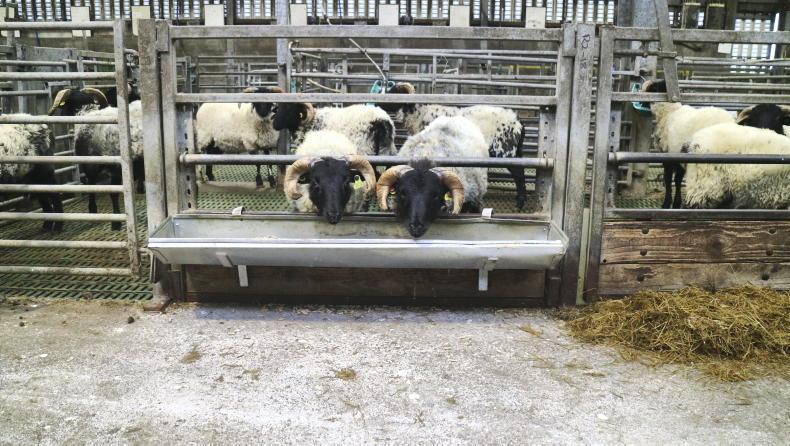
Concentrate feeds should be formulated containing 0.5% ammonium chloride.
Exploring optimum finishing strategies for hill lambs has been one of the main focal areas in recent years.
On the day, the group received an update on findings from the trials, along with practical advice on common health problems which can occur and management pointers from sheep researcher Frank Campion and PhD Walsh scholar Mark Dolan.
Pneumonia risk
Frank explained that the mild weather in recent weeks has left it challenging to transition lambs from an outdoor to indoor environment.
The higher than normal temperatures have contributed to higher levels of pneumonia and if not addressed this can lead to outbreaks occurring. 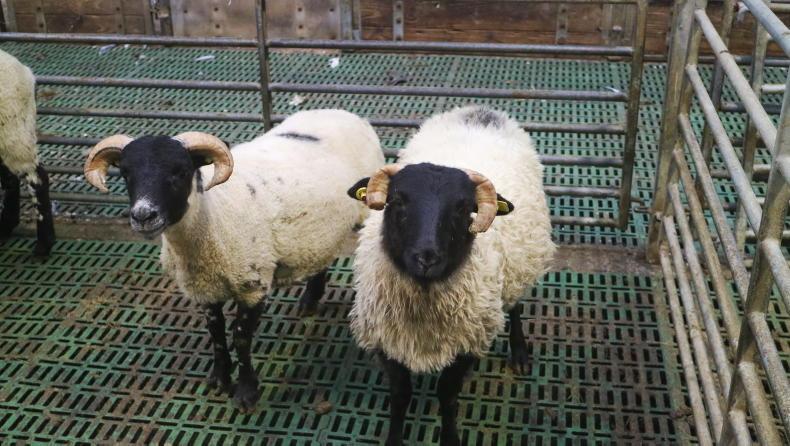
Lambs such as the lamb on the right will need their horns cut to prevent them from growing into their head or eyes.
Lambs receive vaccination for clostridial diseases and pasteurella pneumonia, but as it will take time for lambs to build a defence mechanism, practices should be adopted to reduce the stress factors that can trigger an outbreak.
Reducing stress during transit and on arrival to the farm will help greatly and lambs should be given time to rest before being subject to health treatments.
The quarantine procedure in place in Athenry includes worm and fluke drenching and vaccination for clostridial diseases, pasteurella pneumonia and orf.
Lambs are also footbathed at regular intervals and dipping is the treatment of choice for external parasites.
Temperatures are dropping back, but ventilation is still a major factor in maintaining optimum airflow and preventing a build-up of stale air and a heightened risk of diseases spreading.
Therefore, lambs should be afforded sufficient space and not penned too tightly in group penning or at a higher stocking rate than is suitable for the size of the shed and airflow.
Feed management
A significant percentage of hill lambs will not have received concentrate feeding previously and this can lead to a longer transition phase indoors.
The ideal situation is where lambs are in a position to be trained to eat meals indoors.
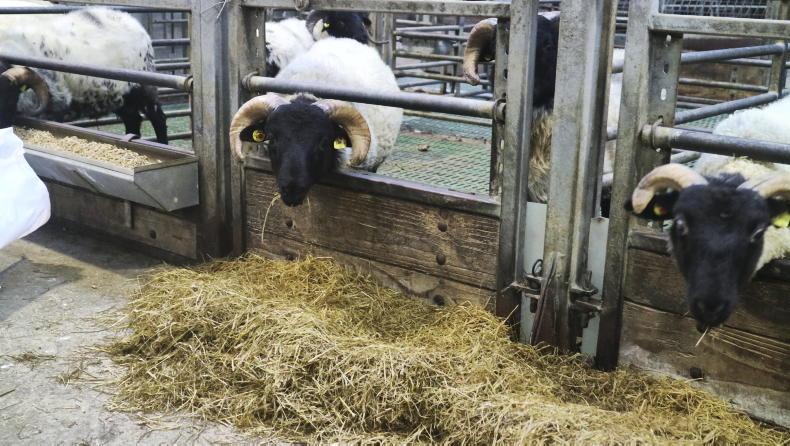
Lambs should be offered a roughage source at all times.
Depending on circumstances, delaying housing or training lambs to eat while at grass will deliver enhanced lamb performance and also reduce stress factors from a marked change in diet as well as the environment.
The protocol in place in the trial is to offer 250g initially where starting from scratch and step this up by 200g/hd every three days until ad-lib feeding is reached.
Account should be taken of the fact that horned lambs will require additional trough space to eat unrestricted (recommended feeding space of at least 30cm). Once lambs have transitioned on to an ad-lib concentrate diet, they should have access to fresh feed at all times.
Mark explains that concentrate is ordered in pelleted form in 25kg bags for convenience due to the high level of measurements collected.
Troughs are topped up regularly without offering excessive volumes that may lead to feed going stale and are cleaned out entirely once weekly, with any surplus feed offered to non-priority stock.
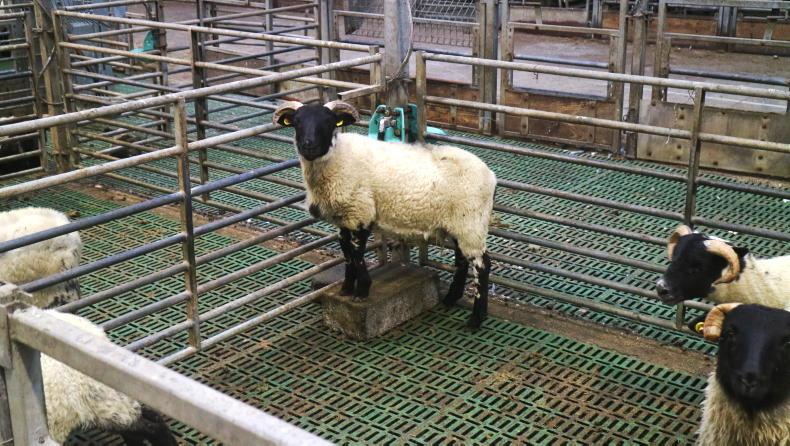
Four- or six-inch blocks placed beside water troughs to allow lambs access water.
The feed is formulated with high feed-value ingredients and Frank explains that feed offered must possess 0.5% ammonium chloride to prevent urinary calculi from developing.
It is also viewed as critical to offer a forage source irrespective of how low the levels are that lambs are consuming. In the Athenry trial, high-feed-value silage is offered.
Frank highlights that they have found that each year, 1% to 2% of lambs will initially refuse to eat concentrates.
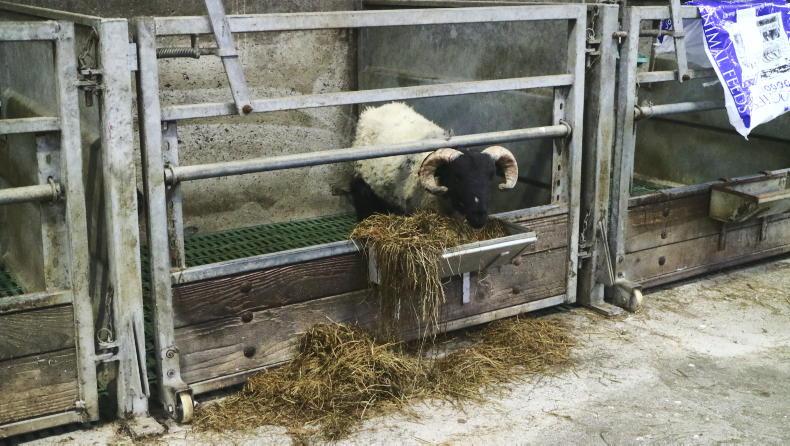
Lambs which are shy eaters or not performing may need to be removed to their own pen or returned outdoors for a period.
Removing these lambs to a pen on their own or returning outdoors to pasture and introducing concentrates at grass will help overcome this issue.
Even with this measure, there is often a lamb which will only consume very low levels of concentrates and, as such, performance will be well below the norm.
Mark says it is important to spend time observing lambs to ensure that all lambs are eating while regular weighing will also identify underperforming lambs.
Mark says a number of other factors must be taken into account to underpin optimum performance.
Access to fresh water: A fresh water supply that lambs can access easily is essential. Where dealing with smaller hill lambs, the height at which water troughs are normally placed may be too high to access. In Athenry, 4in or 6in blocks are placed in front of water troughs for lambs to step on to drink.
Overgrown horns: The rate at which horns will grow on some lambs increases sharply with ad-lib feeding. Lambs with horns that are growing inwards may need to have them cut at regular intervals. There is also the possibility of lambs getting their horns stuck in penning, rubber slats, etc. This is another reason why regular supervision is beneficial.
Lameness and foot bathing: Lambs with lameness issues should be separated from the group and initially delayed from housing or housed together for intensive treatment. Regular foot bathing thereafter will help to keep on top of issues, while, in straw-bedded housing, spreading lime along feeding areas or around moist areas such as drinking troughs will help keep on top of disease. Swift action in the case of issues occurring will also reap rewards in keeping lameness at bay.
Lamb cleanliness: Ventilation, floor type and feeding management will influence lamb cleanliness. Research in Athenry has shown that shearing lambs will deliver no benefits in terms of lamb performance, but it is a great aid in keeping lambs cleaner, while also allowing more animals to be housed in a given area. Four weeks of wool regrowth will typically be required before slaughter to be in a position to clip lambs again if needed to comply with the clean livestock policy. Ultimately, a clean-fleeced, healthy animal should be produced for slaughter.
An article in last week’s Focus supplement outlined that despite concentrate prices increasing significantly in recent months, the economics of supplementing finishing lambs still stacks up.
Two aspects can have a massive influence on the success of intensive indoor production systems – health issues and poor animal husbandry or management.
Last week, farmers participating in the Northern Ireland Sheep Programme visited Teagasc Mellows Campus, Athenry, Co Galway, to gain an insight into the latest topics under investigation at the research centre.

Concentrate feeds should be formulated containing 0.5% ammonium chloride.
Exploring optimum finishing strategies for hill lambs has been one of the main focal areas in recent years.
On the day, the group received an update on findings from the trials, along with practical advice on common health problems which can occur and management pointers from sheep researcher Frank Campion and PhD Walsh scholar Mark Dolan.
Pneumonia risk
Frank explained that the mild weather in recent weeks has left it challenging to transition lambs from an outdoor to indoor environment.
The higher than normal temperatures have contributed to higher levels of pneumonia and if not addressed this can lead to outbreaks occurring. 
Lambs such as the lamb on the right will need their horns cut to prevent them from growing into their head or eyes.
Lambs receive vaccination for clostridial diseases and pasteurella pneumonia, but as it will take time for lambs to build a defence mechanism, practices should be adopted to reduce the stress factors that can trigger an outbreak.
Reducing stress during transit and on arrival to the farm will help greatly and lambs should be given time to rest before being subject to health treatments.
The quarantine procedure in place in Athenry includes worm and fluke drenching and vaccination for clostridial diseases, pasteurella pneumonia and orf.
Lambs are also footbathed at regular intervals and dipping is the treatment of choice for external parasites.
Temperatures are dropping back, but ventilation is still a major factor in maintaining optimum airflow and preventing a build-up of stale air and a heightened risk of diseases spreading.
Therefore, lambs should be afforded sufficient space and not penned too tightly in group penning or at a higher stocking rate than is suitable for the size of the shed and airflow.
Feed management
A significant percentage of hill lambs will not have received concentrate feeding previously and this can lead to a longer transition phase indoors.
The ideal situation is where lambs are in a position to be trained to eat meals indoors.

Lambs should be offered a roughage source at all times.
Depending on circumstances, delaying housing or training lambs to eat while at grass will deliver enhanced lamb performance and also reduce stress factors from a marked change in diet as well as the environment.
The protocol in place in the trial is to offer 250g initially where starting from scratch and step this up by 200g/hd every three days until ad-lib feeding is reached.
Account should be taken of the fact that horned lambs will require additional trough space to eat unrestricted (recommended feeding space of at least 30cm). Once lambs have transitioned on to an ad-lib concentrate diet, they should have access to fresh feed at all times.
Mark explains that concentrate is ordered in pelleted form in 25kg bags for convenience due to the high level of measurements collected.
Troughs are topped up regularly without offering excessive volumes that may lead to feed going stale and are cleaned out entirely once weekly, with any surplus feed offered to non-priority stock.

Four- or six-inch blocks placed beside water troughs to allow lambs access water.
The feed is formulated with high feed-value ingredients and Frank explains that feed offered must possess 0.5% ammonium chloride to prevent urinary calculi from developing.
It is also viewed as critical to offer a forage source irrespective of how low the levels are that lambs are consuming. In the Athenry trial, high-feed-value silage is offered.
Frank highlights that they have found that each year, 1% to 2% of lambs will initially refuse to eat concentrates.

Lambs which are shy eaters or not performing may need to be removed to their own pen or returned outdoors for a period.
Removing these lambs to a pen on their own or returning outdoors to pasture and introducing concentrates at grass will help overcome this issue.
Even with this measure, there is often a lamb which will only consume very low levels of concentrates and, as such, performance will be well below the norm.
Mark says it is important to spend time observing lambs to ensure that all lambs are eating while regular weighing will also identify underperforming lambs.
Mark says a number of other factors must be taken into account to underpin optimum performance.
Access to fresh water: A fresh water supply that lambs can access easily is essential. Where dealing with smaller hill lambs, the height at which water troughs are normally placed may be too high to access. In Athenry, 4in or 6in blocks are placed in front of water troughs for lambs to step on to drink.
Overgrown horns: The rate at which horns will grow on some lambs increases sharply with ad-lib feeding. Lambs with horns that are growing inwards may need to have them cut at regular intervals. There is also the possibility of lambs getting their horns stuck in penning, rubber slats, etc. This is another reason why regular supervision is beneficial.
Lameness and foot bathing: Lambs with lameness issues should be separated from the group and initially delayed from housing or housed together for intensive treatment. Regular foot bathing thereafter will help to keep on top of issues, while, in straw-bedded housing, spreading lime along feeding areas or around moist areas such as drinking troughs will help keep on top of disease. Swift action in the case of issues occurring will also reap rewards in keeping lameness at bay.
Lamb cleanliness: Ventilation, floor type and feeding management will influence lamb cleanliness. Research in Athenry has shown that shearing lambs will deliver no benefits in terms of lamb performance, but it is a great aid in keeping lambs cleaner, while also allowing more animals to be housed in a given area. Four weeks of wool regrowth will typically be required before slaughter to be in a position to clip lambs again if needed to comply with the clean livestock policy. Ultimately, a clean-fleeced, healthy animal should be produced for slaughter.












 This is a subscriber-only article
This is a subscriber-only article







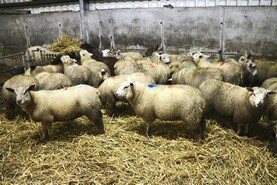


SHARING OPTIONS: